Silk.Part 2.
The technology of silk production
For centuries silk has remained, for most countries of the world luxury commodity that gave the money. Silk production is a very long and laborious process that requires constant attention. Currently a number of procedures are automated.
Silkworm cocoons
For centuries, sericulture has evolved and improved, becoming a precise science. And even now, the technology of producing silk is based on the old methods.
Silk is obtained from cocoons of the silk moth. There are many varieties of wild silk moths. But only one of them was the famous ancestor of Bombyx mori, a blind, flightless moth, from which the finest silk. I suppose that it derived from Bombyx mori mandarina, the wild silk moth inhabiting in white mulberry trees only in China. In the process of selection domesticated she lost her ability to fly and can only eat, to mate, to procreate and to produce silk fiber.
Mol
In addition, there is in nature one species of moth – Antheraea mylitta, also produces silk fiber, but more rough. The thread is called Toussaint.
Silkworm
The female Bombyx mori, hatched from the cocoon, mating with a male. After that, it is 4-6 days lays up to 500 eggs, and shortly thereafter dies. For future use, select only healthy eggs. They are sorted, tested for the infection. Patients eggs burn. They are very small and light – weight hundreds hardly reaches 1 gram. They are kept at a temperature of about 18 degrees Celsius, gradually increasing it to 25 degrees Celsius.
Stage of development of larvae of the silkworm
About 7 day hatch into little worms, the size of which does not exceed 2 mm. It is this larval stage of a moth called the moth. Continue for approximately one month silkworms eat constantly, increasing its weight and size. So, at the age of 4-5 weeks they grow up to 3 cm or more, and the weight increased thousands of times!
They eat only mulberry leaves, which are harvested and selected by hand, and then crushed. Feeding happens regularly, day and night. At this time, thousands of feeding worms are contained in special trays, which are placed one on the other.
In the room where the worms are maintained constant temperature and humidity. They should be protected from any fluctuations in the external environment, such as: loud noises, drafts, strong smells of products and even sweat. From thousands of the jaws, grinding the leaves of the mulberry tree, is the constant buzz resembling the sound of heavy rain pattering on the roof. During this time, the worms moult several times, gradually changing its color from grey to pale pink.
Bamboo trays of silkworm
Finally it comes time to make a cocoon. The silkworm begins to worry, shaking his head back and forth. Caterpillars are placed in separate compartments. With the help of two special glands – dies, the worms begin to produce a gelatinous substance, which hardens upon contact with air. A substance that is produced by silkworms, includes two main components. First – fibroin, an insoluble protein fiber that constitutes 75-90% of output. The second is the sericin, a sticky substance intended to bond the fibers of the cocoon. In addition they contain fats, salts, wax.
For three or four days, the silkworms weave around itself the cocoon, placing himself inside it. They become like white fluffy elongated coil. At this time, the cocoons are sorted for color, size, shape etc.
Pupae of silkworm
Here are silkworm cocoons
Then it takes another 8-9 days, and the cocoons are ready for unwinding. If you miss the time, the pupa turn into moths and break through the cocoon, damaging the integrity of the thread. So doll, you first need to kill. For this it is subjected to heat, after which the cocoon is immersed in hot water to dissolve the gummy substance sericin that holds the threads. At this point, it only removes a small part, about 1%, but this is enough in order to be able to unwind the thread.
The killing of larvae
Then find the end of the thread, conducting it through a porcelain eyelet and gently begin to spin, wind it around the bobbin. Each cocoon produces a thread long, on average, from 600 to 900 m, and individuals of up to 1000 meters or more!
Drying silk
Silk thread
Then together 5-8 twist threads to one thread. When some of the strands ends, a new twist to it, and thus formed a very long thread. Sericin contributes to the adhesion of one thread to another. The resulting product is raw silk, is wound into skeins of yarn. Currently, this process is automated.
Machine for reeling cocoons
Operator
Yarn skeins of raw silk are sorted by color, size and other characteristics. Then the silk threads again and twist to achieve their homogeneous structure and density. At this stage you can twist different yarn to get then different textures of fabric. Next, the filaments passed through special rollers. Thereafter, the yarn enters a weaving factory.
Here the yarn is again soaked in warm soapy water, the refining, and the weight of the yarn is reduced to 25%. After that, the yarn has a creamy white color and can then be dyed and subjected to additional machining processes. Only then can you start making fabric.
Silk fibers which did not go to spinning filaments from the cocoons destroyed, torn ends, etc., can also be twisted into filaments, such as those produced from cotton or linen. The quality of this silk below, it tends to weakness and fuzziness. It can be put, for example, to manufacture silk quilt.
Manufacturer of silk quilt
Traditional loom for weaving carpet
Silk carpet
Interesting stats: of silk for men's ties is required, on average, 111 cocoons, and silk for sewing women's blouses — 630!
Despite the fact that there are now many synthetic fibers – polyester, nylon, etc., none of them can compare in quality with real silk. Silk warm in cold weather and cold in hot weather, they are pleasant to the touch and pleasing to the eye. In addition, a silk thread stronger than a steel thread of equal diameter!
Painting on silk
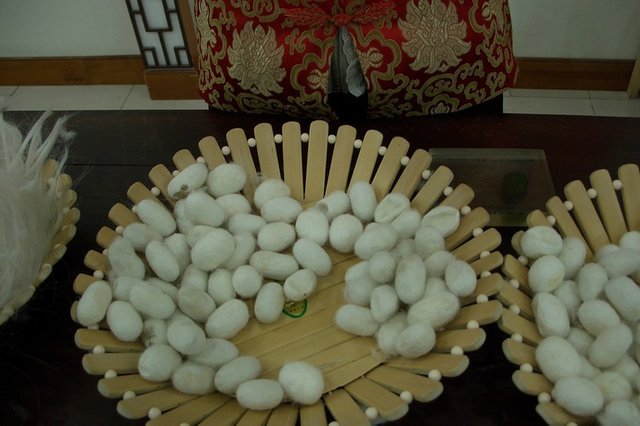
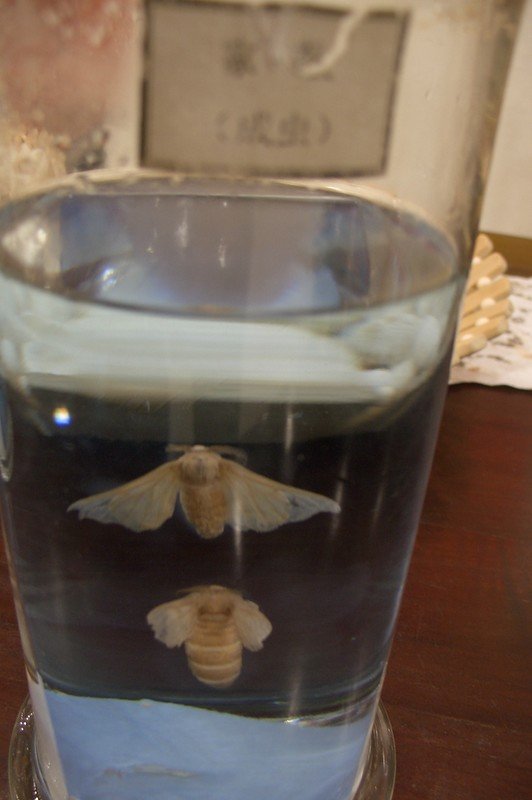
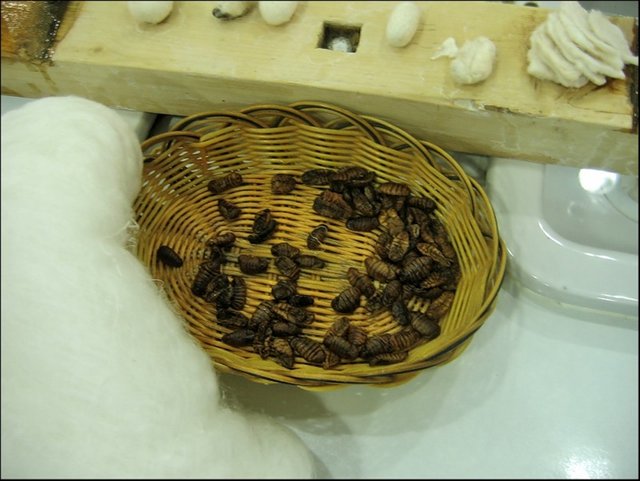
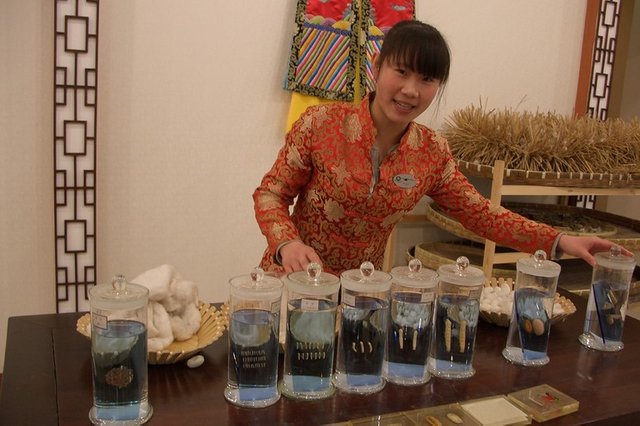
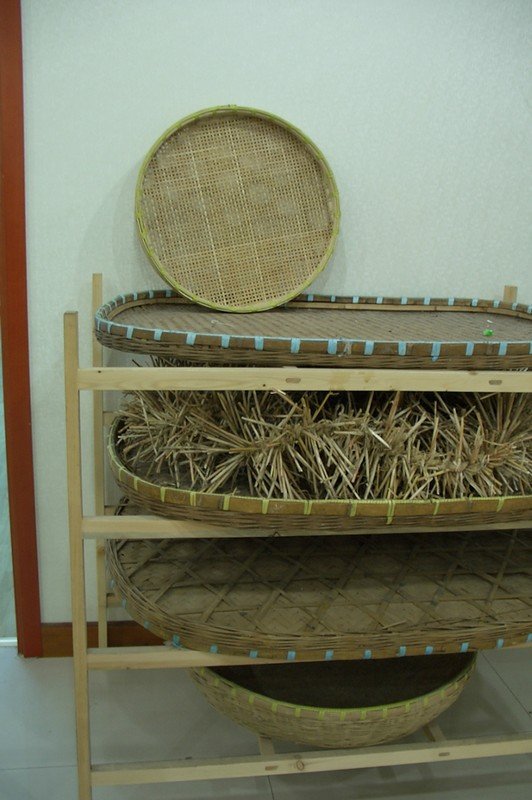
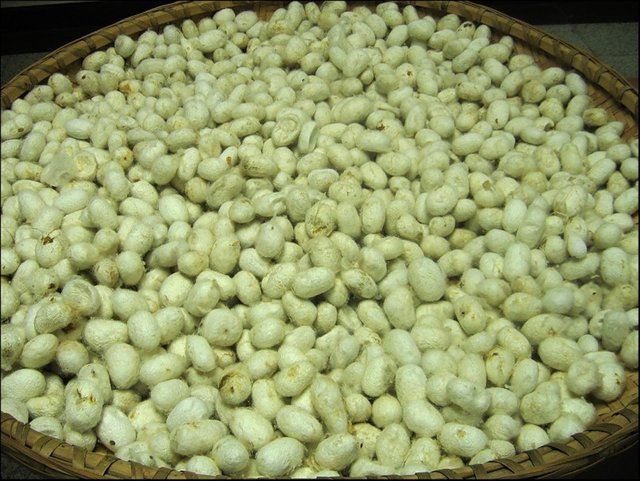
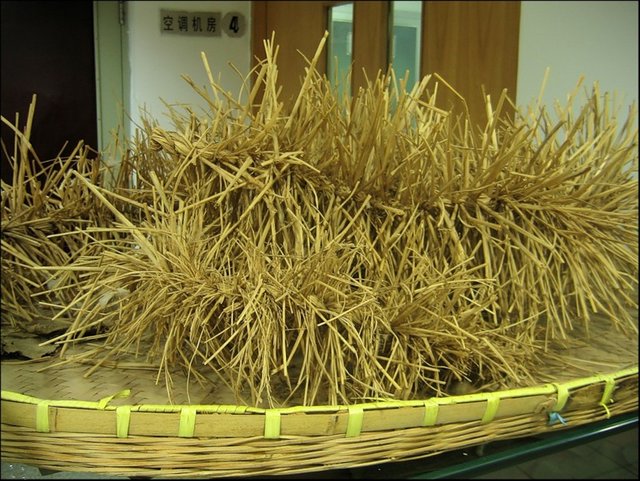
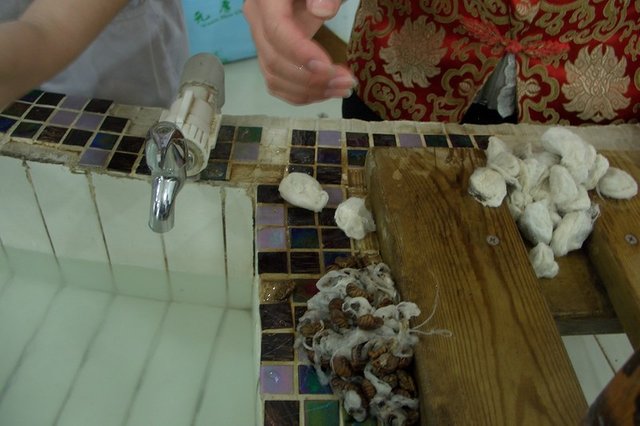
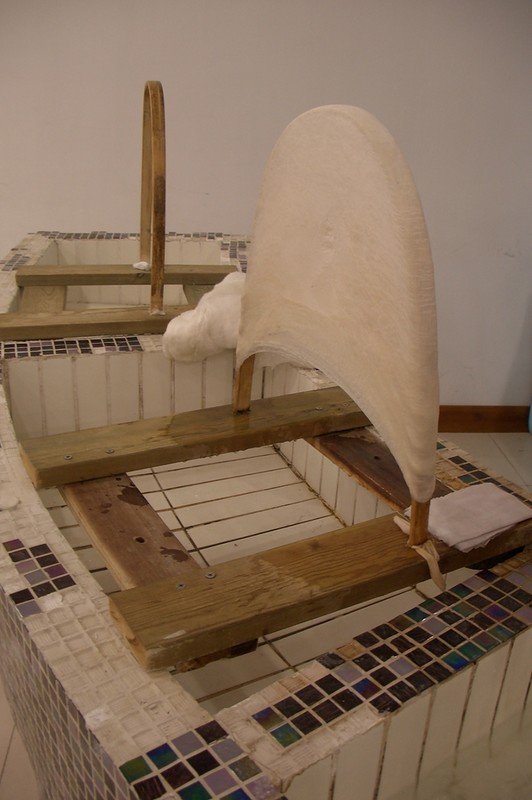
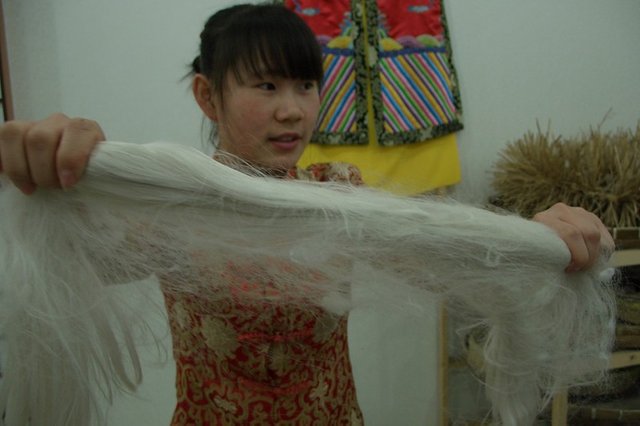
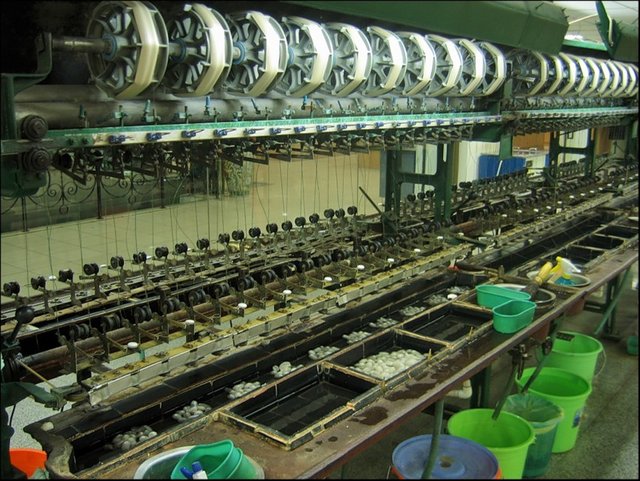
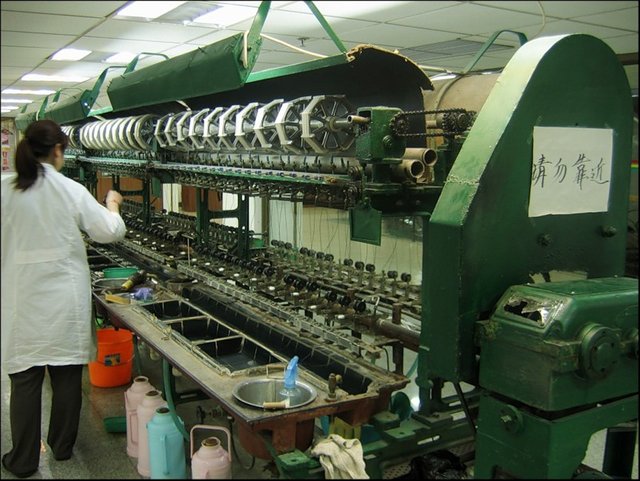
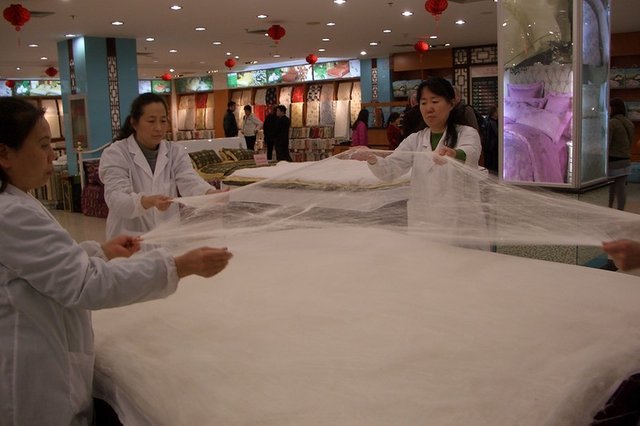
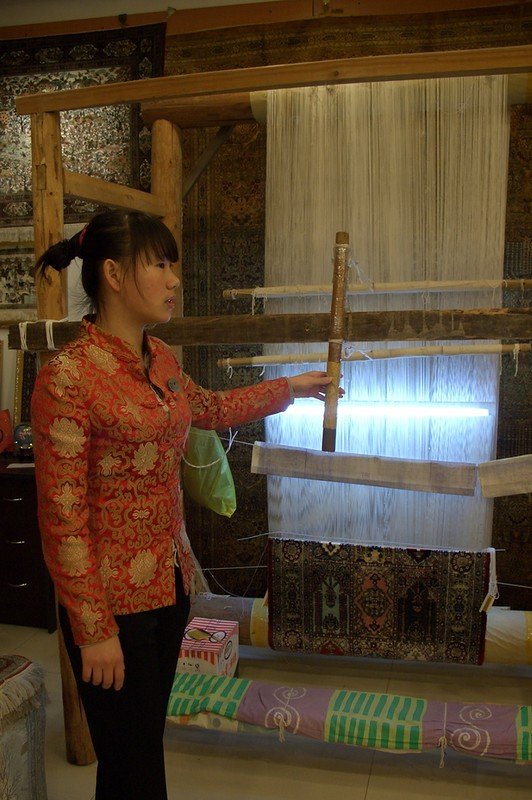
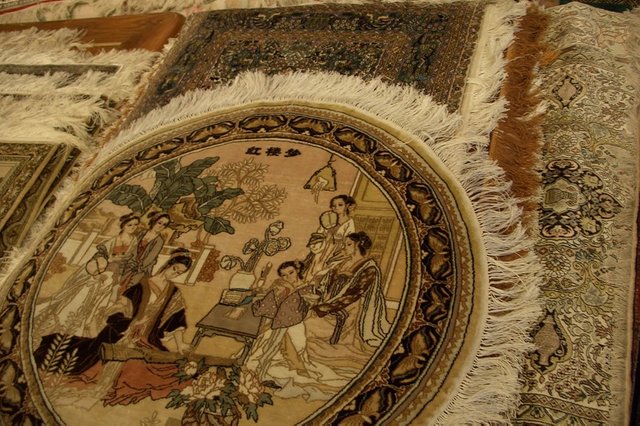
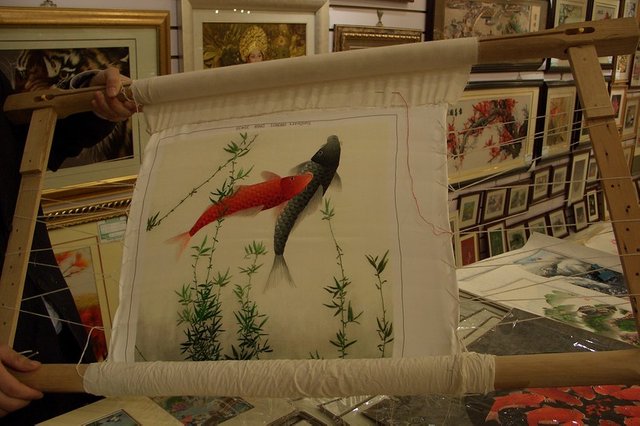
Upvoted for being the favorite article, thank you for unraveling a mystery to me that has always eluded me! How does silk come to be? I live near a river and there are many trees which are netted up with what appears to be a similar metamorphosis which prompted my recent wondering, " could those be wild silkworms?" My hometown is full of weavers of wool, and the art of spinning and weaving is something I hold in highest regard. Much gratitude and respect for silk and the magic behind this most delicate and unique legacy.
Thank you for sharing!!!
There is so much I didn't know about silk that you have enlighten me with some history.